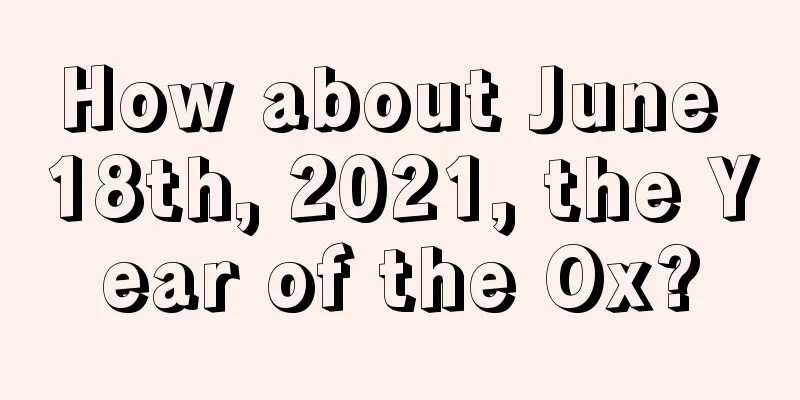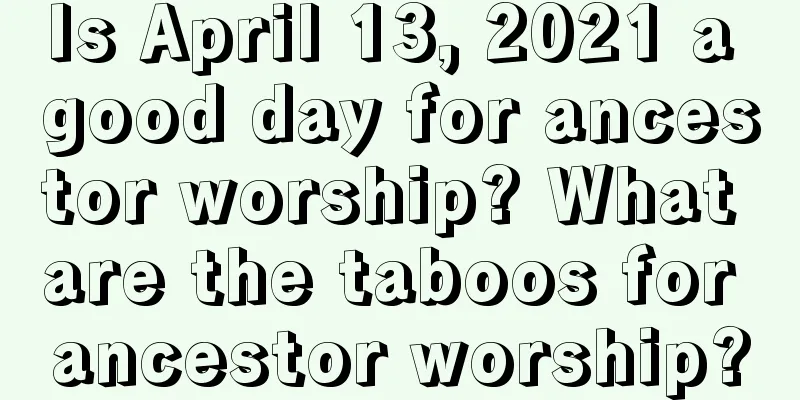What day is the 29th day of the twelfth lunar month? What are the customs of the 29th day of the twelfth lunar month?

Introduction: We all know that the end of the year is the busiest time of the year. Every place has its own customs and activities to welcome the arrival of the new year. Especially in the few days before the New Year, there are many things to do and it is really busy! Do you know what day is the 29th day of the twelfth lunar month? What are the traditional customs on this day? Please see the following for specific content! Mr. Shui Mo has carefully sorted out many customs and some precautions about New Year’s Eve. If you want to know more exciting content, please go to Mr. Shui Mo’s New Year’s Eve special topic to see more!What day is the 29th day of the twelfth lunar month?The twenty-ninth day of the twelfth lunar month is the day before New Year's Eve, commonly known as "Little New Year's Eve". On this day, families hold banquets, people visit each other, which is called "saying goodbye to the old year", and burn incense outdoors, which is called "tianxiang". This usually lasts for three days.The difference between Little New Year's Eve and Big New Year's EveNew Year's Eve refers to the last night of the twelfth lunar month of each year, which is connected to the Spring Festival (the first day of the first lunar month). The word "chu" in "Chuxi" means "to go; to change; to alternate". Chuxi means "the end of the month and the year". People have to get rid of the old and welcome the new. It means that the old year is over and the new year will come. It is the last night of the lunar calendar. Therefore, the activities during this period are centered around getting rid of the old and bringing in the new, eliminating disasters and praying for blessings. During the Zhou and Qin dynasties, at the end of each year, a "Dannu" ceremony was held in the imperial palace, in which drums were beaten to drive away the plague demons. This was called "Zhu Chu". Later, the day before New Year's Eve was called Xiao Chu, or Little New Year's Eve, and New Year's Eve was called Da Chu, or Big New Year's Eve.What are the folk customs on the 29th day of the twelfth lunar month?Visit the graves and ask for offerings from the ancestorsThe Chinese lunar calendar is divided into big and small months. The so-called big month is thirty days, and the small month is only twenty-nine days. Therefore, the twelfth lunar month is a short month, and the twenty-ninth day is the last day of the year. Then the 29th day of the twelfth lunar month is New Year's Eve. Even if it is not a short month, the next day is New Year's Eve, so all preparations for the New Year must be completed on this day. In the entire New Year festival, the 29th day can be said to be the busiest day. In addition to preparing various food, clothing and sacrificial offerings for the New Year festival, there is also an extremely important activity of "visiting the graves to pray to the ancestors". Therefore, the New Year's folk song says, "On the 29th day of the twelfth lunar month, visit the graves of ancestors and ask for great offerings." The worship of ancestors has a long history in China. Treating the dead as if they were alive is not only an important symbol of filial piety, but also a virtue of respecting the elderly. Therefore, every time there is a festival, we have to offer sacrifices to our ancestors. This is not only a way to comfort the ancestors, but also an expression of gratitude and longing for the ancestors by the descendants. The Spring Festival is a major festival, so the ceremony of visiting graves and praying to ancestors is particularly solemn and important. The time for visiting the graves and praying to the ancestors is in the early morning of the 29th day in most areas, while in a few areas it is in the afternoon or dusk on New Year's Eve.Steamed BunsThe dough is leavened on the 28th, and the steamed buns will start to be steamed on the 29th. People use their imagination to make the buns into various shapes such as longevity peaches and small animals. In Tianjin, people will go to Qiaoxiang Pavilion to ask for Chinese knots on this day, which means "Qiaoxiang brings good luck".Summary: The above article is what the editor has introduced to readers about the festival introduction and customs of the 29th day of the twelfth lunar month. I hope you can learn about it and feel the upcoming New Year atmosphere! |
<<: What Feng Shui considerations should be taken into account on New Year's Eve 2017
Recommend
Auspicious and inauspicious times on the 222nd hour of the seventh lunar month in 2019! How is your career fortune today?
Everyone has his or her own position and responsi...
Is May 22, 2020 a suitable day for raising the roof beam? Check the auspicious position of the God of Wealth on July 12!
Introduction: It is generally necessary to choose ...
Will you be at work on May 8, 2021? Which day's work will be made up for the Labor Day on May 8, 2021?
May Day is a statutory holiday. Because there are ...
Detailed explanation of the fate and fortune of girls born on September 18th in 2021
The ninth month of the lunar calendar is the third...
Is it a good time to open a new store on the tenth day of the first lunar month in 2020?
Introduction: You also need to choose an auspiciou...
What is the zodiac sign of a baby born on the seventh day of the first lunar month in 2019?
What is the zodiac sign of a baby born on the seve...
A complete analysis of the fate of boys born on the Spring Equinox in 2021. Are boys born on the Spring Equinox good?
The fate of boys born at different times is also d...
How many months of pregnancy is required for a baby born in the twelfth month of the lunar calendar? Are babies born in December okay?
It takes a certain amount of time for a child to b...
What is the lunar calendar for February 16th in 2022? Is it suitable to pick up a car at a 4S store?
The second month of the lunar calendar is known as...
How many months does it take to get pregnant if you are born in the ninth month of the lunar calendar in the Year of the Dog 2018? What is the fate of those born in the ninth month of the lunar calendar?
Introduction: The pregnancy time is different for ...
Is it a good idea to move on Valentine's Day, February 14, 2020? How many Valentine's Days are there in a year?
Introduction: It is generally necessary to choose ...
How is the 26th day of the third lunar month in 2021? Can we open the business?
If you want the feng shui of your store to be good...
Is it okay to go to the 4S store to pick up the car on November 29th of the lunar calendar in 2020? Is it an auspicious day?
The arrival of the eleventh month of the lunar ca...
Check the relationship between floor Feng Shui and the Five Elements in 2020. Which floor has good Feng Shui?
With the advancement of economy and technology, sk...
In which dynasty was the Double Ninth Festival officially designated as a folk festival? How did the ancients celebrate the Double Ninth Festival?
As one of our country's traditional festivals,...









